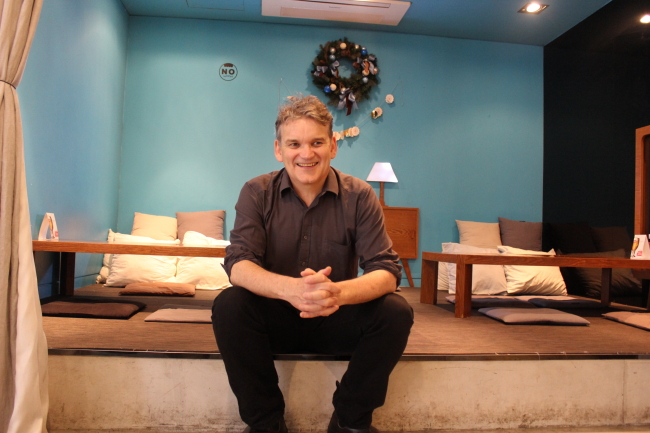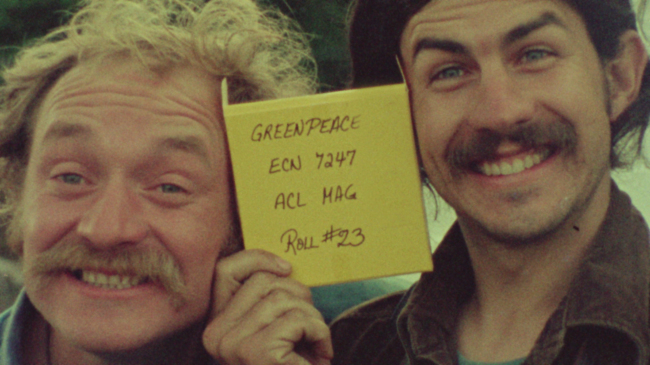According to documentary filmmaker Jerry Rothwell, the now global environmental organization Greenpeace originally started out with “a few hippies on a boat.”
“It began with a small group of Canadian activists who set out on a fishing boat in 1971,” the British filmmaker told The Korea Herald in an interview last Tuesday in Seoul.
The activists were trying to stop then American president Richard Nixon from conducting a nuclear test in Alaska. Though their attempts were seen as foolhardy, the image of a small boat going against the gargantuan U.S. Coast Guard ships caused a sensation on television, which was gaining new momentum as a media platform at the time, said Rothwell.
This is the story that Rothwell traces in his 2015 documentary “How to Change the World,” which won Best Feature Film at the 13th Green Film Festival in Seoul last week.
 |
Documentary director Jerry Rothwell poses at a cafe in Seoul on May 10. (Green Film Festival in Seoul) |
The film depicts the birth and evolution of Greenpeace, which has led global change on a number of environmental causes, including whaling, tuna fishing and sustainable energy, since its founding in the early 1970s.
“(The activists) eventually managed to put an end to the nuclear experiment,” he said. “That’s the moment the organization went global, like a band having a breakthrough song. Suddenly, they were huge.
“I think it’s quite inspiring what they did. They were incredibly brave physically, and planned things cleverly in terms of getting media attention,” said Rothwell.
The film lauds the power of daring activism -- “If we leave the meek to inherit the earth, there won’t be much to inherit,” says Greenpeace’s key founding member Robert Hunter -- while also addressing structural problems an organization, even one based on big ideals, must confront.
“(Greenpeace’s founding members) had a strong sense of mission but they also had big egos,” said Rothwell. “Like in a band, their success brought in the issue of power and money and structure. The film looks at what happens when you go from protesting to actually trying to make change, instead of demanding change.”
 |
A scene from “How to Change the World,” which won the Best Feature Film prize at this year’s Green Film Festival. (How to Change the World) |
The title “How to Change the World” could thus be read both literally and “slightly ironically,” he said.
“(The activists) definitely brought about change in that they ... made us think about our relationship to nature, an idea that was fairly new at the time.
“But (the film) could just as easily be called ‘How Not to Change the World’ or ‘How to Try and Change the World and Make a Lot of Mistakes Doing it.’ It is more a question than a statement.”
Rothwell is known for probing into unusual stories, such as in his 2010 documentary “Donor Unknown” about a sperm donor and his many scattered offspring. The filmmaker’s most recent project is “Sour Grapes,” about an Indonesian immigrant who fooled wealthy wine collectors and made millions through fake vintage wines. “How to Change the World” also won an award at Sundance Film Festival in 2015.
Rothwell is currently shooting a documentary in India with education scientist Sugata Mitra which will deal with new forms of “child-centered” education.
By Rumy Doo (
doo@heraldcorp.com)





![[Weekender] Korea's traditional sauce culture gains global recognition](http://res.heraldm.com/phpwas/restmb_idxmake.php?idx=644&simg=/content/image/2024/11/21/20241121050153_0.jpg)



